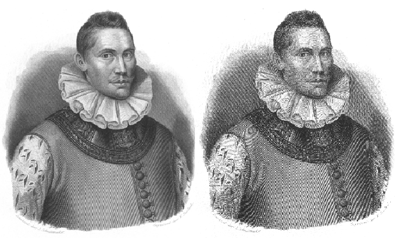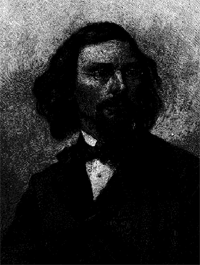

7. Presentation
Key Concepts
introduction
formats/compression
web browsers
network
scaling
monitors
image quality
guidelines
SCALING
ROUTINES AND PROGRAMS
Institutions have constrained file size by reducing resolution, bit depth,
and/or by applying compression. The goal is to speed delivery to the desktop
without compromising too much image quality. Scaling refers to the process
of creating access versions from a digital master without having to rescan
the source document. The program and scripts used for scaling will affect
the quality of the presentation. For instance, scaling can introduce moiré
in illustrations, such as halftones, when resolution is reduced without
attention paid to screen interference.

Effects of Scaling on Image Quality:
The left image is scaled by using a blur filter, resizing, and reducing
the bit depth. The right image is scaled without the use of blur filter,
resulting in moiré.
Scaling programs are also used to reduce the bit-depth of an image and different processes result in substantially different quality.

 Effects of Scaling Programs:
Note the image quality difference between these two derivatives
created by different conversion software.
Effects of Scaling Programs:
Note the image quality difference between these two derivatives
created by different conversion software.
Several Web sites listed at the end of this section provide helpful information on scaling programs, optimizing graphics, and choosing file formats to enhance image quality. Consider also whether the program offers batch processing and user-defined scripting capabilities, and get a sense of the total processing times. Minutes spent on one image quickly add up to days, weeks, and months, depending on the size of your image collection.
© 2000-2003 Cornell University Library/Research Department